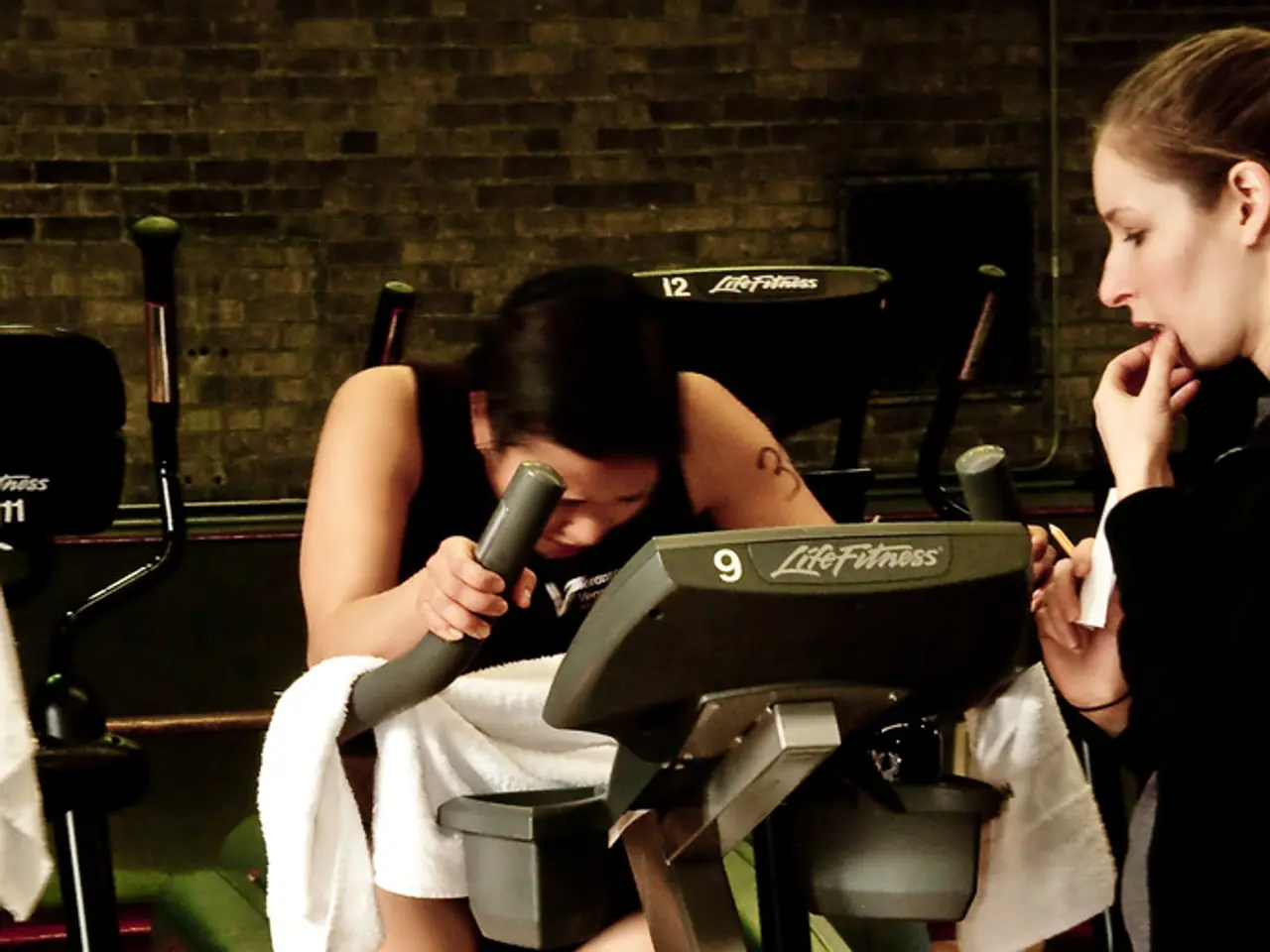Which exercise burns more calories: incline walking or running?
In the realm of physical fitness, two activities often come to the forefront when discussing weight loss and overall health – running and incline walking. While both have their merits, each caters to different fitness goals and preferences.
Running, with its higher intensity, burns more calories per minute, making it an efficient means of creating a calorie deficit quickly. However, its high-impact nature can be tough on the joints. On the other hand, incline walking offers a more gentle approach, burning up to 32% more calories than flat walking and being easier on the knees [3].
Incline walking adds resistance to a workout, recruiting the glutes and quads more than a walk on the flat, resulting in a stronger lower body [4]. Moreover, it promotes greater fat utilization, with some research suggesting that walking steep inclines at a moderate speed burns 60–70% more fat than running on flat terrain at a similar perceived effort [5].
The 2024 Compendium of Physical Activities estimates that an adult weighing 140lbs burns 310 calories by running at a speed of 6-6.3 mph for 30 minutes, and 177 calories by walking uphill at a moderate pace on an incline of 1-5% for the same amount of time [2].
Running can also help build lower-body muscle, but sprinting and hill runs are more likely to show results [6]. However, if you have joint issues, walking (whether at an incline or flat) is a better option than running [7].
Incline walking, with its focus on strength and endurance, boosts both heart and lung health [8]. If you were to walk until your legs felt heavy on an incline treadmill, you would be experiencing a form of strength training, according to Bennett [9].
When aiming for weight loss through a calorie deficit, both incline walking and running can be effective. The choice depends on factors like intensity, duration, and individual preference. However, it's important to note that achieving a calorie deficit is more important for fat loss than the specific type of exercise [10].
Both activities have immediate physical benefits, such as reducing the risk of chronic illnesses like osteoarthritis and heart disease, and mental health benefits like the release of endorphins that trigger a positive feeling [11].
Investing in a decent pair of walking or running shoes is crucial for both activities [1]. For lengthy sessions or trendy workouts like the 12-3-30 walking workout, a home treadmill or gym membership may be necessary [12].
In conclusion, while running burns more total calories in less time, incline walking promotes greater fat use and muscle engagement with less joint stress, potentially supporting longer, more consistent workouts. The best option is the one you can perform consistently and safely, paired with proper diet control.
References:
- Financial Express
- Financial Express
- NordicTrack
- NordicTrack
- Running Magazine
- Mayo Clinic
- WebMD
- Bennett
- Running Magazine
- Mayo Clinic
- NordicTrack
- Strength training can be achieved through consistent incline walking, as suggested by Bennett, providing resistance and engaging the glutes and quads.
- Running, with its higher intensity, is an efficient means of creating a calorie deficit quickly, but its high-impact nature may put stress on joints.
- Achieving a calorie deficit is crucial for weight loss, and both running and incline walking can be effective, with the choice depending on factors like intensity, duration, and individual preference.
- Proper nutrition plays a vital role in weight management and health-and-wellness lifestyle alongside fitness-and-exercise activities like running and incline walking.
- Cardio exercises like running and incline walking not only aid in weight loss but also reduce the risk of chronic illnesses like osteoarthritis and heart disease.
- Investing in a good pair of walking or running shoes is essential for both activities, and for lengthy sessions or trendy workouts like the 12-3-30 walking workout, a home treadmill or gym membership may be necessary.




